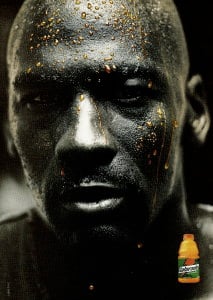Culture Shift
You don't have to look far to see the shift toward story-based marketing. A quick glance through a magazine, prime-time television, even the latest Super Bowl ads makes it clear – stories are working as a way to tell brand stories. This is an important change in marketing trends, part of it due to the power of social marketing. Significant industry experts report that multiple corporate brands – ExxonMobil, Dow, Google, and IBM to name a few – have all upped the messaging related to their corporate story.
All of these brands are looking to tell the bigger story – the story of who they are and what they believe, not just what they sell. McDonald’s, for example, has recently shifted their emphasis toward their values and business intent, rather than the price of their food. (Lippincott)
These large companies have big budgets and staff to create and publish this narrative. I am often asked by businesses and marketers, how "less than giant," small businesses, corporations and nonprofits can they tell a better story about who they are that goes beyond their products.
What Makes a Brand a Story?
1. You discover the story basis of your brand, when you take time to listen to how it is already being told by your customers. Your real story is not just what you tell, print and share by video, but the experience you create for those you serve. It may seem like circular reasoning, but your real story is the the one you enable your customers to tell. You move much closer to "storifying your brand" when you listen and research the things that your product or service is already enabling people to tell. You begin telling your story when you celebrate (or repair) that tale and amplify it.
By receiving feedback, you may come face to face with elements of your business that don't line up with your values. Work may need to be done to revise the narrative you're telling. This shouldn't be done by skirting the issues, but by making substantive change to how you serve. Good stories are authentic – connecting the reality of your brand with the experience of your customer.
2. Good stories always have personality. Both the personality of the storyteller and the personality of the story itself can be an important element in an effective narrative. What is the personality of your story? What quirks do your customers find more enjoyable, unexpected, and memorable about your story? An important part of this conversational tale is expressed not just in its content, but in the style of its telling. Don't be afraid for your story to be different than the one that others in your industry tell. In fact, that's ideal.

3. Stories need both instant and serial elements. Your brand has to be shared both in nearly instant "snapshots" and as a serial story told in bits and pieces over time. This is the tension caused by social media. People and the stories they love are captured by iconic images, short videos, and very short stories that allow an entire narrative to be told in a moment. This is the Gatorade image of an athlete in motion covered in colored water – it tells the whole story in just a glance.
The other side of this coin is the serial nature of stories – they are told in little bits over a long period of time. These small "artifacts" of your story have to be portable and easy to share, so that main features of your story are interesting enough that customers will share them with others. Social media, by nature, makes things disappear after just a short time, so you have to keep sharing consistently as if you are telling a daily soap opera or a weekly comic strip.
Learn how to capture your brand story
4. Give customers a character they want to root for--themselves!. Any story that keeps our interest has characters that are facing a challenge, and even though we're not sure they are going to overcome in the end, we are still compelled to watch. We find in those characters some part of ourselves, something very familiar that compels us to follow along. Your story should feel familiar to your customers and prospects, drawing from them something important about themselves that they value, desire and need. A good brand story allows a customer to live out, in advance, the experience of what you really offer, and the feelings, opportunities or relationships it may bring about.







.jpg)
.jpg)